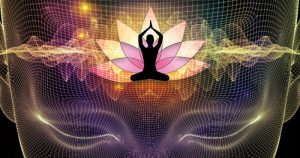
Exercise on the Eightfold Path
By John M. de Castro, Ph.D.
“it’s possible to merge awareness and physical exercise together as one. This allows you to experience the present moment during your physical activity.” – Adam Brady
We often think of meditation or spiritual practice as occurring in quiet places removed from the hubbub of life. This is useful to develop skills and deep understanding. Unfortunately, most people do not have the luxury of withdrawing into solitary or monastic life. But it is possible to practice even in the midst of the chaos of everyday life. In fact, there are wonderful opportunities to practice presented to us all the time in the complexities of the modern world. I find that engagement in exercise is one of many wonderful contexts in which to practice the Buddha’s Eightfold Path, the Buddha’s prerequisites for the cessation of suffering; Right View, Right Intentions, Right Actions, Right Speech, Right Livelihood, Right Effort, Right Mindfulness, and Right Concentration. Engaging in exercise on the eightfold path can not only improve health but also can contribute to spiritual development. As a bonus it can make exercising more enjoyable.
As we well know, engaging in regular physical exercise is important for our physical and mental health. Similarly, practicing mindfulness is important for our physical, psychological, and spiritual well-being. Together they are a dynamite. But what needs to be done to combine them? With a little reflection, a myriad of opportunities to practice are available while exercising. The details will vary with the type of exercise and the individual, but these same opportunities are available regardless of the nature of the exercise.
An important component of developing the “Right View” is the recognition that all things are impermanent, they come and they go and never stay the same. When exercising it is easy to note that everything about the workout is impermanent. The body is stressed by exercise and this is a good thing as this is what leads to the beneficial effects of exercise. When moderately stressed muscles heal, they grow stronger. Sometimes the stress is pleasant and other times not so. But no matter what it will change, perhaps getting better or perhaps getting worse, but it will not stay the same. During exercise, the physical and mental state of the individual is constantly changing. The body fatigues and grows tired. Pain and discomfort may come and go. By recognizing how fleeting these feelings are, we witness the impermanence of all things. We grow to not only better understand the body and how it benefits from exercise but also see the operation of impermanence. This produces relaxation and acceptance of the body as it is, even as it’s changing, not only improving the exercise but reinforcing “Right View”.
A good example of this is practicing while running. I’m older and my knees are worn out so I practice this while speed walking. Noting the sensations from the foot each time in strikes the ground and as it lifts off the ground, it’s apparent that the sensations are constantly changing and never the same. Impermanence is on display. The same goes for the surrounding sights which are constantly changing. It’s impossible to hold onto any of the myriad of sensations occurring. They are constantly arising and passing away. Impermanence is on display.
Another important component of “Right View” is the recognition that everything is interconnected. This is readily apparent during exercise. During yoga practice all of the aspects of the body work together. As the muscles are stressed they increase the heart rate and respiration. With each pose the muscles produce heat, causing sweating and dilatation of the blood vessels at the surface. Moving into each pose produces changes in balance which produce automatic changes in other muscles to compensate and maintain balance and equilibrium. The senses are engaged in monitoring for pain and fatigue and guiding the exercise. Try paying attention to all of the parts of the body and how they are affected in performing a forward bend, a tree pose, or a lower cobra. By paying attention to these processes during this practice, how the entire body is engaged can be witnessed even if the exercise is targeted at only particular muscles. Interconnectedness is completely apparent. The awareness of this interconnectedness allows for better exercise while reinforcing “Right View”.
One practice I employ with exercise is to identify the limiting component. For me it’s breathing that seems to limit what I can do. My ability to play basketball is limited by the ability to get oxygen to the muscles while sprinting down the court. For others, it’s their knees or other joints, or cardiac capacity, or body temperature. There’s always something that keeps the individual from going faster, or being stronger or more accurate. The ability of the entire body to excel is limited by this factor. All other aspects of physical function are restrained by it. All other aspects are interconnected with it. as it all works together.
This interconnectedness is particularly apparent in team sports. In these contexts, participants affect one another, everyone on the team and everyone on the opposing team. In fact, that interconnectedness is part of the allure and enjoyment of team sports. As every athlete knows, performance is also affected by the individual’s psychological state. At times, exercisers just don’t feel like doing it but force themselves. While at other times, they feel great and can’t wait to get into it. In both cases this psychological state markedly alters the exercise. It’s all interconnected. Hence, the “Right View” of interconnectedness is readily apparent during exercise. Make it part of the exercise to pay attention to and recognize this interconnectedness. It’s on display.
Still another important component of “Right View” is the recognition of the presence of suffering and unsatisfactoriness in all activities. Exercising is a wonderful opportunity to observe this unsatisfactoriness and its roots. While cycling we want everything to be a certain way and when it isn’t, we are unhappy. We want to go faster, or with have greater strength for peddling up hills, or with greater endurance to ride further. The cyclist wants the weather to be just right, the wind to die down, to always be at the back, or for it to be cooler. We want the body’s discomforts to go away. In other words, rather than enjoy cycling, we make it unsatisfactory by not accepting how things are. All things, big and small, are almost always less than optimum. If we focus on this and crave it to be different, then we suffer. But, if we simply accept these conditions as they are, we can ride our bicycle with appreciation and enjoyment with unsatisfactoriness on display. Note, how this constantly arises in thoughts during exercise. Recognizing this can lead to greater understanding of how we make ourselves unhappy, and how by simply accepting things as they are produces better performance and greater enjoyment. Practicing this will reinforce “Right View.”
While exercising, playing sports, or being an observer there are frequent opportunities to practice “Right Intentions.” Here reducing or preventing harm and promoting greater happiness, wisdom, and well-being for all participants can be practiced. This is particularly important for team sports. It is useful, beforehand, to set this intention to make engaging in the game be beneficial for all participants. “Right Intentions” involves targeting what to do while exercising to increase peace, well-being, and happiness, including the abandonment of unwholesome desires.
If exercise particularly in competitive sports, is engaged in with anger, impatience, selfishness, and resentment it is likely to produce harm to everyone involved. Sports, such as football, can be dangerous and can produce physical harm to others. Obviously, games like football are particularly good candidates to play with “Right Intentions.” This way injury or harm can be minimized. It would seem obvious, but taking the time beforehand to establish “Right Intentions” may determine if the game is fun and wholesome or negative and harmful.
When I was young playing basketball with friends an opponent grabbed me as I ran toward the basket. I got angry and retaliated by shoving my friend away forcefully. He fell back so hard that he was momentarily paralyzed. This scared everyone and especially me. It made me recognize the potential harm that I could cause by acting on anger. If I had simply accepted that I was fouled and let it go, no harm would have occurred and play could have continued. The recognition that anger can only lead to more harm is wisdom that can lead to minimizing harm and promoting the greater good. Seeing the situation as it is, and seeing opponents with eyes of compassion leads to skillful actions promoting the happiness and well-being of all.
I’ve found that playing golf is a wonderful opportunity to practice. It has always amazed me how players make themselves so unhappy while engaging in something that’s supposed to be fun. I’ve seen players go into a rage after hitting a poor shot, screaming profanities, pounding their club into the ground or throwing or even breaking the club in rage. This can create a negative atmosphere that sweeps all the players up into a negative mood and destroys the fun and happiness that is the point of playing the game. “Right Intentions” can help here. I’ve learned to approach the game as just that, a game that is to be enjoyed, to laugh at my own incompetence, and joke with the other players about our plight.
We go around the course laughing and having a ball. What a difference it can make, I’ve had other players remark how much they admire me, not for my play which is horrible, but for my enjoyment of the game regardless of how well or more often terribly I play. It changes the atmosphere and infects those that I play with. Just setting the intention ahead of time to have fun regardless, to promote happiness, makes a world of difference. The ripples of good feelings that are created, may spill over from golf to home or work life enhancing life in general.
Playing sports with courtesy, with tolerance and understanding, with kindness and good will needs to be continuously worked on. It’s a practice. “Right Intentions” are a key. They become the moral compass. They tend to lead in the right direction even though at times there are stumbles. It is often difficult or impossible to predict all of the consequences of actions. It is also very difficult avoid all harm. But forming “Right Intentions” and aspiring to create good and happiness will produce more harmony, good will, and happiness and for the practitioner it will produce progress along the eightfold path.
Exercising is another situation to practice “Right Actions.” To some extent taking care of our bodies is “Right Action” as it benefits our health and well-being, which relieves suffering and increases happiness. While working out “Right Actions” includes following the “Middle Way.” Exercising overly aggressively could produce injury while exercising too lightly is probably a waste of time. While exercising in social contexts such as in a gym or jogging with friends, there can be a tendency to show off. This can be harmful to others by promoting jealousy or decreasing their feelings of self-worth or causing them to try too hard potentially leading to injury.
I used to jog with a group that met at lunchtime. We would all wait around until everyone was there to begin our run. But as soon as we began, one particular runner always leapt ahead and ran well in front of the group for the entire run. At first many of us would try to keep up. This would simply lead to him running even faster to stay ahead. This was not good. We were exercising, not racing. It detracted from the good feelings and camaraderie of the group and caused many of us to run too fast for our ability and to suffer. After a while we learned to ignore him and enjoy running with the rest of the group. This was “Right Actions.” It did make me wonder what suffering was driving him to turn a healthy and fun social run into a race and what I might do to help relieve that suffering. But he always ran ahead and alone making it impossible to communicate.
In some sports lying and cheating occur frequently. Fishing and golf are wonderful examples. outright lied about. Golfers frequently do things such as surreptitiously move their ball to a better lie, or report a lower score than they actually had. This is not “Right Actions.” Scrupulous honesty on the long-term leads to greater happiness and well-being even in these kinds of small and often accepted dishonesties.
While engaging in competitive sports we should have the “Right Intentions” of promoting good and happiness, and relieve suffering in ourselves and others. We can do so by competing patiently and courteously with attention and good sportsmanship. Unfortunately, the prevalent attitude is that “winning is everything.” This works contrary to “Right Actions.” With “Right Actions” promoting happiness, and relieving suffering in everyone involved “is everything.” We can only control our own actions while competing. So that is where we practice. But, when we compete with “Right Actions” it affects our competitors, making the game more enjoyable, healthier, and productive for everyone.
Verbal and non-verbal interactions are frequently present while exercising, playing sports, or even as a spectator. There are many opportunities to practice “Right Communications”. It involves communicating in such a way as to promote understanding and to produce good feelings. It is non-violent and non-judgmental communications. While engaging in exercise or sports it is important to think before communicating, is the communication true, is it necessary, and is it kind.
While playing golf we communicate verbally and non-verbally and try to do so with “Right Communications”. When someone makes a great shot, we celebrate with them, possibly teasing them as to why they can’t do that every time, and when they make a terrible shot kidding them that it was better than they usually do, or compare it to our own terrible shots. Note that teasing may not on the surface seem to be true, necessary, and kind. But it can lighten the atmosphere and the back and forth can promote good feelings. Non-verbally, we sometimes celebrate ridiculously, dancing around like a clown, when making a good shot, again promoting enjoyment.
“Right Communications” often involves deep listening. It is impossible to respond appropriately to another if you haven’t listened carefully to exactly what the other said or looked carefully at their expressions or body language. In playing doubles tennis, watch and listen to your partner. They may show anger or slump after a poor shot. In this case “Right Communications” may involve encouraging the partner or pointing out that the shot that they were attempting was a great idea, or make light of it by saying something to the effect that the shot looked more like something you would do. What would be the right approach depends on the individual and the context. But watching and listening carefully can help to understand what communication may produce the most good and happiness.
Even as spectators it is useful to practice “Right Communications”. I’ve observed parents at youth soccer games yelling at referees, players, and coaches. My 13 year old grandson worked hard to become a referee for children’s soccer matches and earn extra money. But he has dropped it because of the abuse that these parents heaped on him for every decision. No matter what decision he made parents on one side or the other would chastise him. I’ve also seen the impact on the children as their parents yell at the referees or at them for their performance. It’s a truly sad display of wrong communications by the adults.
It’s quite simple to see that “Right Communications” are needed. If the parents had stopped and thought if what they were communicating was true, necessary, and kind, if they had listened deeply or watched with compassion, there may have been a completely different atmosphere at the games, my grandson may still be refereeing, and the children would feel good about playing and would be having fun. Such behavior is not confined to youth soccer. Simply observe fans at sporting events even at the professional level, yelling obscenities and insults at opponents or even at their own team’s players. Indeed, even the players are taunting, hurling insults, and “trash talking” to each other. It is clear that there is a great need to teach fans and players, not only good sportsmanship, but also “Right Communications”. We may not be able to change others but at least we can conduct “Right Communications”.
There are many ways that people can make a living with exercise and sports, from a professional athlete or coach to a personal trainer, to a general manager or executive. This can be itself “Right Livelihood”. It is if it is directed to creating good, helping people, keeping peace, and moving society forward in a positive direction. College coaches using student athletes to further their careers without regard to the furtherance of the players well-being or teaching player “dirty tricks” to harm or injure their opponents would definitely not be “Right Livelihood”.
One should reflect deeply on what they’re doing to ascertain whether it promotes good. It is not ours to judge the “rightness” of the livelihood of athletes, coaches, sports executives etc. This is a personal matter where intention matters, that must be reflected upon deeply. The process itself of evaluating “Right Livelihood” may heighten awareness of the consequences of participating in their careers and make them better able to see and correct where they may be going wrong. This can help move the individual along the Buddha’s path.
Exercise also presents a fine context to practice “Right Effort”. In fact, exercise has its maximum benefit when it is fairly strenuous but not too strenuous. If it’s overdone the body will provide appropriate feedback with aches and pains, hopefully not injuries. If it’s done lazily, the body will not improve. So, exercise is almost a perfect situation to teach “Right Effort”. It involves acting according to the “Middle Way.” That is, not trying too hard and getting hurt, but also not being lackadaisical. “Right Effort” is a relaxed effort. The “Middle Way” is where effort should be targeted.
Experienced yoga practitioners know this all too well. Yoga can be very beneficial when practiced with “Right Effort” but can be injurious when done improperly. Poses must be held at the appropriate level, slightly backed off from the individual’s limit without going beyond. Struggling to go deeper, beyond the practitioner’s capability, is a formula for injury. Entering too lightly is a formula for wasting time and receiving no benefit. So, not only is yoga practice a good place to practice “Right Effort” it, in fact, provides feedback demonstrating what the “Right Effort” level should be.
Athletes know that to perform optimally they must relax and not press too hard. This is one of the reasons why meditation practice has proved so beneficial for athletes. It allows them to relax into the present moment and react appropriately to their body’s capabilities. I’ve found that with swimming, if I try too hard to go fast, I actually go slower. On the other hand, when I simply swim with moderate effort but with a relaxed body, it produces and efficient stroke and an appropriate body position in the water for optimum speed. So, “Right Effort” with exercise pays off with optimum performance, physical benefit, and progress on the eightfold path.
Exercise requires an accurate understanding of the state of our bodies and the environment in the present moment in order to determine what level of exercise are needed to promote good performance and enjoyment. In other words, it requires “Right Mindfulness”. Unfortunately, for most of us mindless exercise is probably the norm. While exercising many people listen to music, talk on their cell phones, watch television, or carry on a conversation. But paying attention to what is being experienced while exercising or engaging in sports can turn the exercise into a meditative practice. It creates a richly textured experience of physical and mental activities. It heightens the experience and makes it much more enjoyable.
A prototype is walking meditation, where the individual practices “Right Mindfulness”. The meditator pays close attention to the sensations from the body while slowly walking. Observing each step, feeling the foot hit the ground and pull off the ground, observing each breath, feeling the air on the skin and the touch of the clothing, feeling the muscles contract and relax, experiencing the sights, smells and sounds in the environment. It’s an amazingly pleasant and productive practice.
With exercise, the same technique can be used but greatly speeded up. Jogging can be a speeded-up version of walking meditation. I use “Right Mindfulness” while swimming laps in a pool by doing a body scan. I start on the first lap with paying attention to the sensations from the toes, on the second lap I move to the tops of my feet, next to the bottoms of the feet, to the ankle, shin, knee, thigh etc. The feeling of the water and the movement of each body part is an exquisite practice. I was tired of the boredom of swimming until I developed this practice. It makes the drudgery of lap swimming mindful, interesting, and pleasurable, not to mention that my stroke becomes more efficient and the laps go by quickly. “Right Mindfulness” can be applied to virtually every exercise and sporting activity and will not only make it better but help the participant along the Buddha’s eightfold path.
“Right Concentration” is the practice of focusing the mind solely on one object or a specific unchanging set of objects. Mindfulness is paying attention to whatever arises, but concentration is paying attention to one thing to the exclusion of everything else. This is usually developed during contemplative practice such as meditation. It is difficult to practice during the complex activities involved in exercise. But during repetitive automatized exercises such as jogging concentration on the breath can be practiced.
Engaging in exercise on the eightfold path is a practice. Over time I have gotten better and better at it, but nowhere near perfect. Frequently the discursive mind takes over or my emotions get the better of me. But, by continuing the practice I’ve slowly progressed. I’ve become a better at seeing what needs to be accomplished. I am learning to be relaxed with a smile on my face when I engage in exercise and enjoy the workout.
Can we attain enlightenment through exercise? Probably not! But we can practice the eightfold path that the Buddha taught leads there. The strength of engaging exercise with the practices of the eightfold path is that it occurs in the real world of our everyday life. Quiet secluded practice is wonderful and perhaps mandatory for progress in spiritual development. But for most people it only can occur during a very limited window of time. By extending the practice directly into the mainstream of our lives we can greatly enhance its impact. I like to keep in mind the teaching that actions that lead to greater harmony and happiness should be practiced, while those that lead to unsatisfactoriness and unhappiness should be let go. Without doubt, by practicing the eightfold path in our engagement in exercise leads to greater harmony and happiness and as such should definitely be included in our spiritual practice.
“The message is that mindfulness may amplify satisfaction, because one is satisfied when positive experiences of physical activity become prominent. For those experiences to be noticed, one must become aware of them. . . this can be achieved by being mindful.” – Kalliopi-Eleni Tsafou
CMCS – Center for Mindfulness and Contemplative Studies
This and other Contemplative Studies posts are also available on Google+ https://plus.google.com/106784388191201299496/posts








